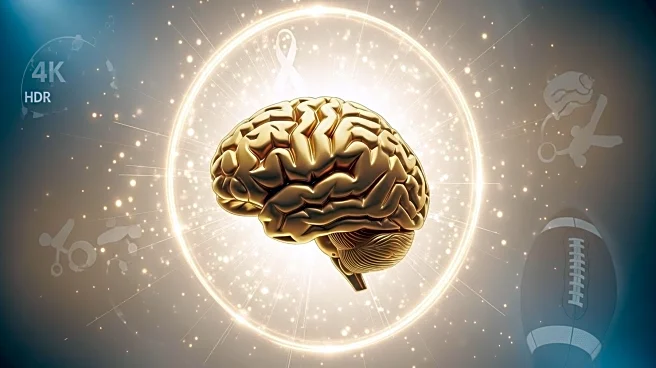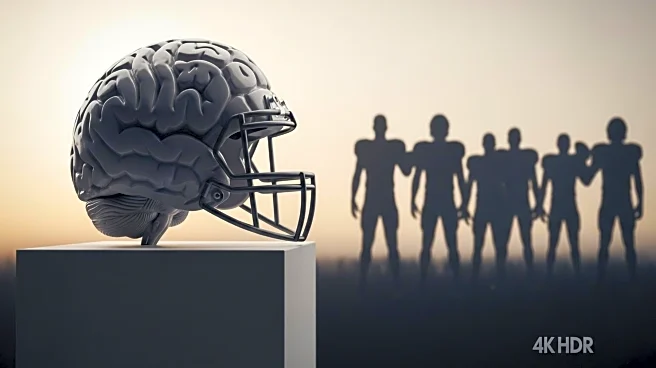What's Happening?
The National Institutes of Health (NIH) is intensifying its research efforts on chronic traumatic encephalopathy (CTE), a brain disorder linked to repeated head impacts, commonly found in former NFL players. As the 2025 NFL season begins, there is increased awareness among players and fans about the risks of concussions and CTE. The NIH is exploring methods to detect CTE in living individuals through brain imaging and blood tests, aiming to identify biomarkers of brain damage. This research is crucial for understanding who might be at risk and improving diagnostic criteria for traumatic encephalopathy syndrome (TES).
Why It's Important?
The focus on CTE is critical as it affects not only athletes but also military veterans and individuals with histories of repeated brain injuries. The NIH's research could lead to earlier detection and better treatment options, potentially reducing the long-term impacts of CTE. This has implications for sports safety protocols, helmet design, and concussion management across all levels of play. The findings could also influence public health policies and raise awareness about the importance of preventing head injuries.
What's Next?
The NIH continues to fund projects aimed at understanding brain injuries and developing diagnostic tools and treatments for CTE. This research is expected to inform safety regulations in sports and improve concussion protocols. As awareness grows, changes in how sports are played and regulated are anticipated, with a focus on reducing head impacts. The ongoing research may also contribute to advancements in treating other neurodegenerative diseases linked to tau protein accumulation.












